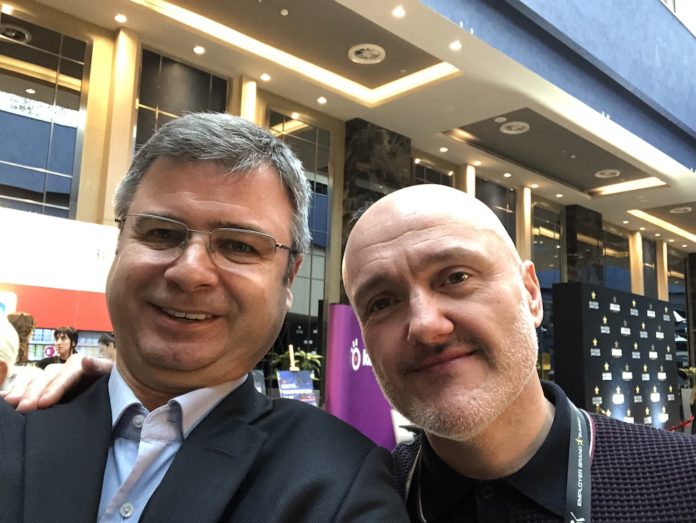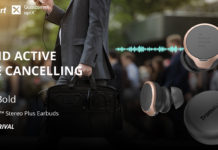I had an opportunity to talk with Dave Hazlehurst from Ph.Creative at Employer Brand Sumit in Istanbul. He is also a co-author of ‘Getting Goosebumps’ book.
We talked about how a company create a brand awareness to be chosen, candidate experience. And, also his book and his nickname googledave 🙂
 – We are here with Dave Hazlehurst. Welcome, Dave.
– We are here with Dave Hazlehurst. Welcome, Dave.
– Hi. How’s it going?
– Thank you. What would you like to talk?
– Basically, the premise of what I’ve just spoken about how do we still stay connected to what makes us human to leverage that in terms of our employer brand and the journey that people go on from candidates through to become an employee to employee experience and then afterward. How do we understand people? How do we take? What we learn in terms of insights from listening to people and observing them and finding out who they are and make it understanding.
To understand who we are as organizations and then what the stories that we need to tell till connect those people to bring them towards us by using the power of our people within our organizations and their hero stories if you like.
I’m taking those stories and amplifying them into people who don’t work yet, but people that they can connect with those stories to go that could be somewhere that I’d like to work as well. But very much about the human side. That is the sort of the headline ‘the more tech we build because we’re getting tech everywhere and our lives are constantly digital now.’
So, the more tech we build, the more digital would become, the more human must be, and it’s about what keeps us human and how do we stay in tune that and use it to our advantage.
– You showed a slide of about 70% of the content is on the go or mobile.
If you think about when a candidate or somebody go look in max show interest in a job or wants to find out about an organization goes, typically the first thing that they do is, ask someone who might work or go search and google. They might go to Twitter, might read blogs, look at the career site, go to LinkedIn or Glassdoor. They go to indeed all these different channels, and it just doesn’t happen.
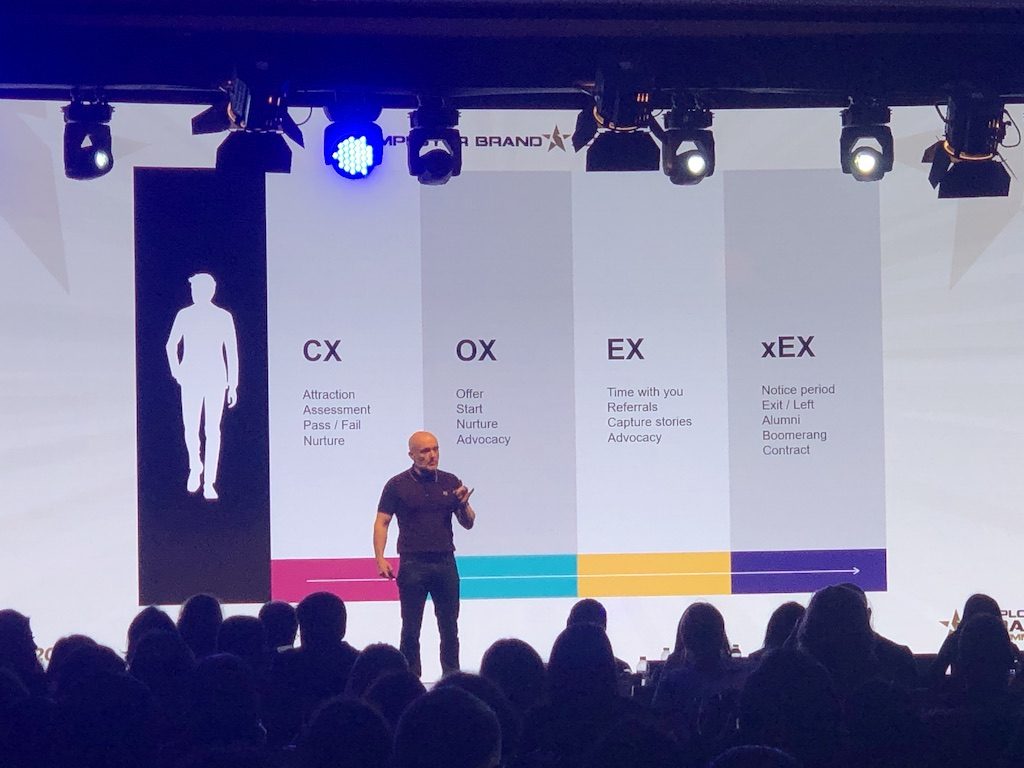 They go look at these things and then apply for that. That’s not how it works. They go into research mode, look on facebook social channels. They use their mobile phone, ask friends. They might go to work at once time, in the evening may be. There are lots of different ways that they can absorb information. And, the average is about they look at about 14 , 15 sources of info before they actually apply for the job of the side. 72% of them could spend up to six hours check it out over a time frame. Therefore, if you take that ‘Okay, what is it? What they want to know?’
They go look at these things and then apply for that. That’s not how it works. They go into research mode, look on facebook social channels. They use their mobile phone, ask friends. They might go to work at once time, in the evening may be. There are lots of different ways that they can absorb information. And, the average is about they look at about 14 , 15 sources of info before they actually apply for the job of the side. 72% of them could spend up to six hours check it out over a time frame. Therefore, if you take that ‘Okay, what is it? What they want to know?’
And then how do we show them what they want to know whether it’s to bring them closer towards or indeed to repel them? Because you might not want all the candidates because they might not understand the right culture there. You got to think about how you repel. And then where do we put those stories, all that information? How do we inform them and educate them and help them make the right decision for themselves and for all and for the company?
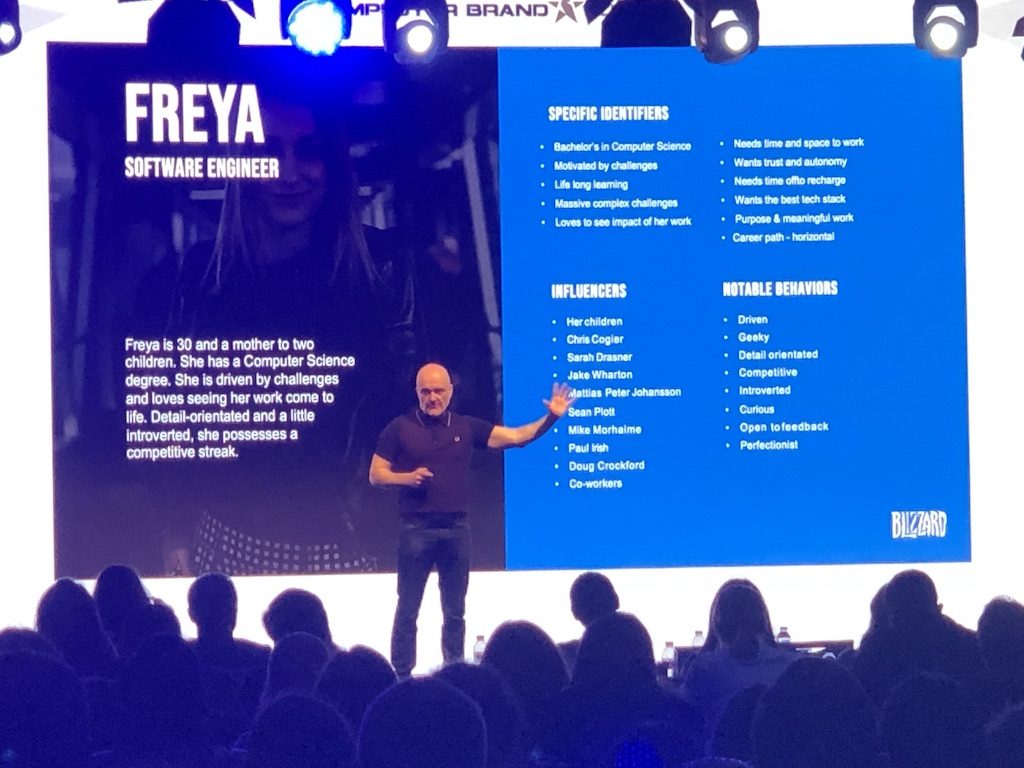 – Do you customize or personalize those contents to a candidate?
– Do you customize or personalize those contents to a candidate?
Let’s talk a bit about personas. For all of our clients, we build a persona. There might be attached personas. There might be an HR persona, a digital marketer persona, finance, etc. Think about the different functions in the organization. Typically, our clients love between 4 and 12 personas. We do quantitative research data. Then, we look very much of the qualitative research of the insights. We learn as much as we can about who those people are not in the organization and also externally, who they want to bring into the organization.
We then come up with the contents in what format and what channels. Then we plan how do we tailor and personalize it for that it speaks to them gives the information they want to win. We use the analogy lots actually. Forget it social media for a second.
– It’s a kind of Human Relationships.
Let me give an example. If I want to attract people in PR journalists, I might check if I know where they network day to day or what pub they like to go and have a drink and what restaurant they like to go and eat him. If I walk into that pub, it’s full of them. I want to speak. I want to know what they’re interested in so that I have a good conversation with them. If it were someone in tech, that conversation would be different. So, we have to tailor advice. We’re not being as effective if we don’t get the odd ones. So that’s a straightforward analogy is figure out who your audience is and where they’d like to go drinking on a payday, what conversationally like and all we do is dig it into that and then doing that online.
– Let me ask another question. How did you get twitter account googledave?
It goes back a bit of time. Obviously, my name is Dave. We used to be a B2B, B2C digital marketing agency before we transformed into an employee brand agency. When we were first starting out, there was only about six of us in the office. A business partner Brian took a phone call. My job was to help people with SEO and yet the time that’s what I was doing. There was somebody on the phone said ‘Can you help us to get to the top of Google.’ There were two of us in the office at the time. Brian just said, you need to speak to Google Dave. And it just became nickname basically. Locally everyone started to know me as ‘Google Dave’, and it just grew and grew and grew. I’ve got to get all the handles twitter and instagram. And I’ve got the googledave, and everybody knows me as ‘Google Dave’, and it’s easier to remember than Dave Hazlehurst 🙂
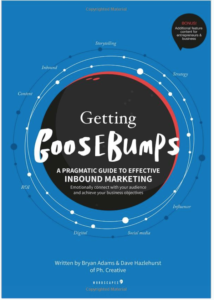 – Could you tell me about your book ‘Getting Goosebumps’? There might be the second edition is on the way.
– Could you tell me about your book ‘Getting Goosebumps’? There might be the second edition is on the way.
It goes back a couple of years ago. It started myself and Brian and then as the teams of all we’re obsessed with learnings taken from over out of the world’s so like some Hollywood and filmmaking, neuroscience. And how do you connect from your own neuroscience? And we’ve always been obsessed with learning. Then through that, we’ve got different processes, rhythms, and ways that we think about this stuff. We started to write a small little buff to give away the conference. And it became a book. It’s basically a pragmatic guy to inbound marketing. Then we’ve transferred the second edition has become inbound marketing for talent attraction. It’s everything from the power of storytelling, neuroscience, how to connect emotionally and rationally with people, how to come up with content ideas, tools and techniques, different social channels all that kind of good stuff content marketing, social media, SEO and it’s everything. We even use it as a pull-out planner.
There are two reasons called ‘Getting Goosebumps’.
The first reason is like I said on stage, ‘What happens when you tell a story. It really connects your brain, releases dopamine to get goosebumps, and you remember it forever.’
And the other thing is ‘whenever we have good ideas, I used to say in the office ‘I’ve got goosebumps. That’s a good idea.’’
– Storytelling is a concept for some companies also.
We’re not marketing a story. It’s more I would say it’s probably more than from story building. If you look at what you’ve got to do now to achieve great storytelling, you look at what Netflix and boxset TV shows like that take 24, Breaking Bad, Game of Thrones. They are long-form storytelling. I mean Game of Thrones, it’s about to kick off season 8. They need to episodes an hour and a half. You tell the story over hundreds of hours that story building.
If you look at that from a marketing point of view, if you look at Social channels, facebook, instagram all that, they reward content the get engagement, You do that for story building over time. It’s not just a piece of content. You’ve got to keep working on it. Companies have to think about how do we do that. Obviously, people have building teams almost editorial teams. We work with clients now which have resources functions of an employer brand that have a team of copywriters. One time, we went with the bank, they had eight copywriters. All they do is write stories for their target persona audience. That’s all they do.
– It’s a kind of producing some content then put it on the web site.
Web site is not enough alone. You need to amplify. You can have great content, but if the audience doesn’t see it, no one gives a care. You’re fighting for time to get attention and get them to occur. You need great content, keep telling the story and amplifying it, pushing it out to where your audience is and seek their engagements. And that you might be asking questions about something.
– I would like to ask about KPIs’
You’ve got reach. You’ve got engagements. There has to be a conversion. There has to be a ROIs. Like with our clients, we look at called attribution modeling. This is not complex. But what a lot of people do is online. They put all the value on the last. Imagine, I applied for a job. Let’s say the job is worth 5.600 pounds. Let’s say I went into Google, found a post on a website, and click apply first. That’s not in our world happen. But imagine that all happens, everyone would say that’s the last click. The reality is candidates go to different sources. You want to be able to attribute that trip across the channels.
So, we have to do what’s called a first, middle, and last click and then Google analytics. I’m not going to tell you against complexities, but with Google Analytics, you can measure where people have seen this content and how that has helped them get towards the point of converting. Then you can learn where to spend the effort for resource budget and what content words, in what channels to help you get candidates applications. It’s known as attribution modeling.
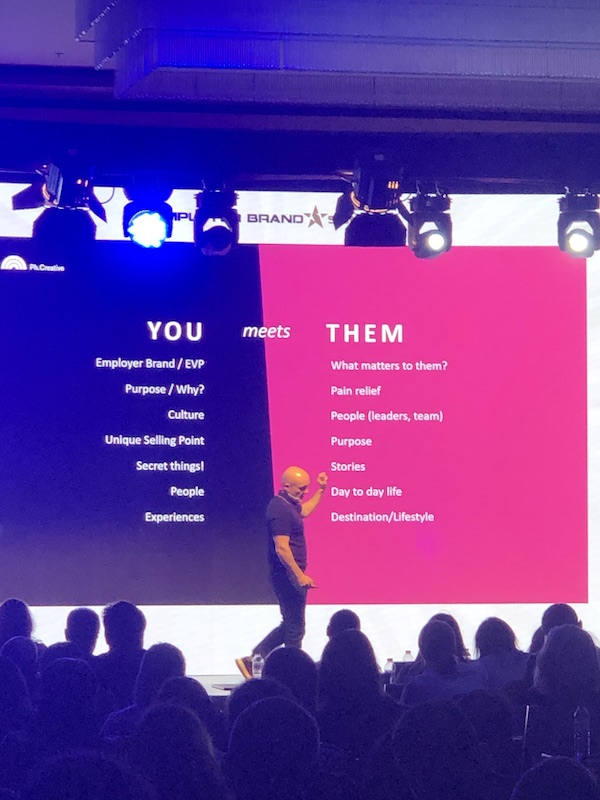 – You are using all those data.
– You are using all those data.
We bring it together basically to see what’s working because there’s no point doing that doesn’t work.
– Maybe you can talk about a couple of your success stories. What was the most interesting one?
The Virgin Media thing was interesting. I spoke about the storytelling at the Virgin Media. We did a piece where a couple years ago where they wanted us to look at this case studies online all over the place. It was about their candidate experience. I talked into an added keynote at LinkedIn about four years ago about how candidates a customer. And actually, if we upset the candidates whatever their experience could have an impact on the bottom line. So, we looked into at Virgin Media. Basically, what we uncovered was 18% of candidates where customers. 6% of them canceled the Virgin Media product in four weeks of the candidate experience stopping. And they lost 4.45 million pounds a year because of it. That was pretty serious, and then we hope to fix that.
– Last one, what do you suggest to the companies, agencies, and candidates for this business?
The number one thing I say to companies is ‘have you worked hard enough to understand the audience you want to connect with.’ Nine times of ten is not. So, the first thing is to do is going to figure out who they are and build some personas.
There was a slide where I had figure out who you are as an organization of ‘What Makes You Different,’ what stories you want to tell and figure out who your audience is where they hang out what they’re interested and connect the story.
– As I understand, the personas are the most essential components.
– Exactly. Build personas.
– Thank you
– My pleasure.
Sinan Oymaci


